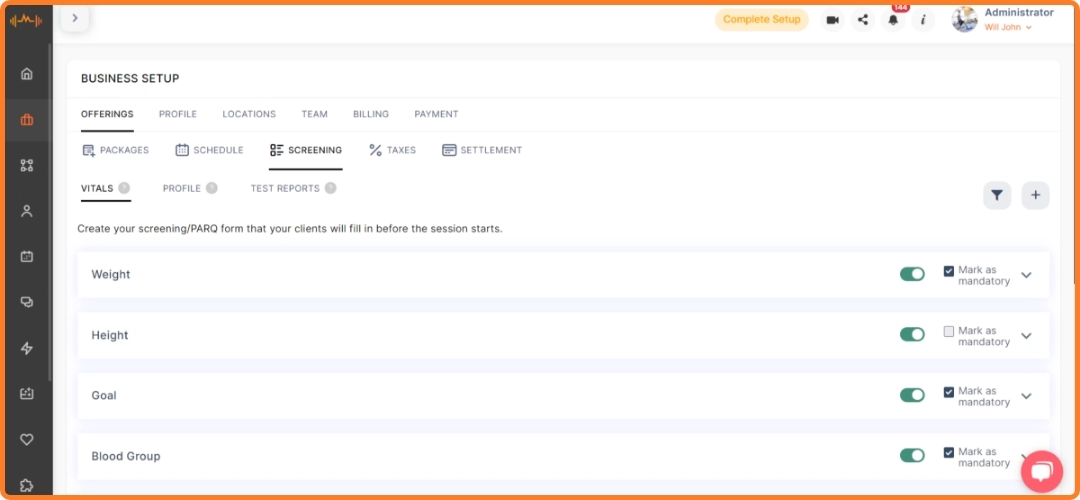Fitness assessments are essential for individuals who want to measure their fitness levels and track their progress over time. They help trainers and coaches to understand their clients' physical capabilities and limitations, enabling them to design personalized workout routines and nutrition plans.
However, creating an effective fitness assessment template can be a challenging task for trainers and trainers. That's why in this article, we will explore what a fitness assessment template is, how trainers can customize it, and the importance of tracking progress to achieve fitness goals.
A fitness assessment template is a standardized format that trainers and coaches can use to evaluate their clients' physical abilities. The template typically includes a series of tests that assess various aspects of fitness, such as cardiovascular endurance, muscular strength and endurance, flexibility, and body composition.
It’s also important to be aware of any past injuries, surgeries, medical conditions, or other circumstances that need to be taken into consideration.
The results of these tests can help trainers develop a personalized exercise program for their clients.
While a standardized template can provide structure and consistency to the assessment process, it's important to remember that every client has unique physical abilities and limitations that must be taken into consideration.
Trainers should therefore take the time to customize their assessment templates to ensure that they are gathering the most accurate and relevant information about each client.
When customizing the assessment template, trainers should consider factors such as the client's age, fitness level, and any pre-existing medical conditions or injuries. For example, if a client has a history of knee injuries, the trainer may want to modify certain tests to avoid aggravating the injury.
Additionally, trainers should take into account the client's fitness goals and training preferences. For instance, if a client is training for a marathon, the trainer may want to focus more heavily on endurance and cardiovascular testing.
Adjusting the intensity or duration of tests can also be an effective way to customize the assessment template. For example, if a client is new to exercise or has low fitness levels, the trainer may want to start with shorter, less intense tests and gradually increase the difficulty as the client's fitness improves. Similarly, if a client is already highly fit and active, the trainer may want to include more challenging tests to accurately assess their abilities.
Another important aspect of customization is modifying the scoring criteria. By adjusting the scoring criteria, trainers can better track progress and identify areas for improvement. For example, if a client's goal is to improve their flexibility, the trainer may want to track progress by measuring the degree of improvement in their range of motion over time.
Overall, customizing the fitness assessment template is an important step in designing a personalized workout routine and nutrition plan for each client. By taking into account their unique physical abilities, limitations, and fitness goals, trainers can ensure that their clients receive a tailored approach to achieving their fitness objectives.
When and how often to give fitness assessments is an important consideration for trainers. It's essential to determine the right time for a new client to have their first assessment. Typically, a trainer should conduct the assessment at the beginning of the training program.
This baseline evaluation can help identify areas of strength and weakness in the client's physical abilities, allowing the trainer to create a personalized training plan.
In addition, trainers should repeat the assessment periodically, generally every four to six weeks, to monitor the client's progress and adjust the training program as necessary. However, trainers may also vary the frequency of assessments based on the client's fitness goals, fitness level, and the intensity of their training program. For example, athletes may require more frequent assessments to track their progress accurately and adjust their training regimen.
The frequency of assessments may also vary based on the type of training program, with some requiring more frequent evaluations than others. For instance, a weight loss program may necessitate more regular assessments than a strength-training program.
Moreover, assessments can help identify and prevent injuries, especially in programs with a high risk of injury. Therefore, trainers must understand the needs of each client and develop a customized assessment schedule that meets their individual requirements.
To effectively track progress from one assessment to the next, trainers should keep a detailed record of the client's results. This can include measurements such as body weight, body fat percentage, strength levels, and cardiovascular endurance. MevoLife’s fitness client manager tracks these details automatically as the client submits new assessments.
By analyzing these results, trainers can identify areas where the client has made significant improvements and areas that require further attention. This information can then be used to modify the training program to better meet the client's needs and goals.
Additionally, trainers can use progress tracking as a way to motivate their clients and demonstrate the positive impact of their hard work and dedication.
Staying current with the latest industry research and trends is essential for trainers to provide the best possible guidance and support to their clients. As such, trainers should review their fitness assessment template periodically to ensure it's up to date and aligned with current best practices.
They should also consider updating the template if they identify a need for additional tests or modifications to the existing template. By doing so, trainers can ensure that they are collecting the most relevant information about their clients' physical abilities and creating a plan that is tailored to their unique needs.
Additionally, trainers should be mindful of any trends or patterns in the data that suggest a need for change. By keeping the fitness assessment template up to date, trainers can continue to provide the best possible guidance and support to their clients, leading to greater success in achieving their fitness goals.
Conclusion
A fitness assessment is a critical tool for trainers and coaches to evaluate their clients' physical abilities, track progress, and develop personalized exercise programs. A fitness assessment template provides a standardized format for conducting assessments, but it should also be customized to fit the unique needs of each client.
If you want to simplify the management of your fitness assessment and keep an easy to adapt template on-hand at all times, take a look at MevoLife’s all-in-one fitness coaching platform. Assigning, receiving, and tracking client progress are all simple with the integrated coaching CRM and client app.

